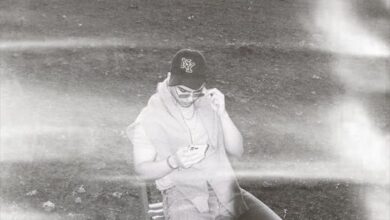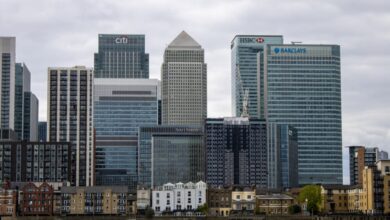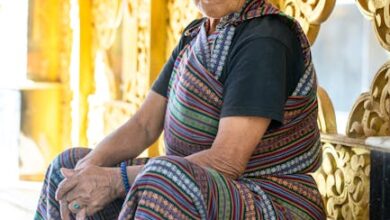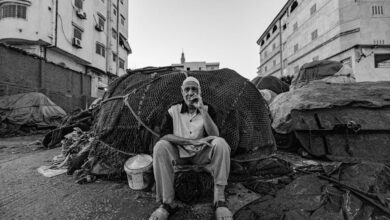Money is Data: Taking Gluwa’s Bridge to Pangea’s Web

Money is Data: Taking Gluwa’s Bridge to Pangea’s Web
Estimated reading time: Approximately 12 minutes
- Gluwa aims to connect global financial markets by redefining money as portable, verifiable data, leveraging blockchain technology for financial inclusion.
- Their core infrastructure includes **Spacecoin** for global internet access and **Creditcoin** for a public, secure ledger enabling credit systems and **Real World Asset (RWA)** tokenization.
- The global integration of RWAs faces significant hurdles, including legal fragmentation, complex custody challenges, and enforcement mechanisms across diverse jurisdictions.
- Gluwa emphasizes a human-centric approach, learning from *ancient African credit systems* to build fair credit infrastructure that protects against debt traps, especially in emerging economies like Nigeria.
- Successful RWA tokenization requires localized verification, differentiated asset categorization, and granular risk profiling to ensure equitable and secure financial inclusion.
- Money is Data: Taking Gluwa’s Bridge to Pangea’s Web
- Bridging the Digital Divide: Gluwa’s Infrastructure for a Connected World
- The Complexities of Globalizing Assets: Lessons from Nigeria
- A Human-Centric Approach: Lessons from Ancient African Credit & Gluwa’s Path Forward
- Scaling Hurdles: Gluwa’s Path to Globally-Acceptable RWA Tokenization
- Conclusion: Beyond Immutability – Building a Protected & Prosperous Pangea’s Web
- Take Action:
- FAQ about Gluwa and RWA Tokenization
There’s this running joke that replays in my head whenever I go shopping. Imagine you’re an extraterrestrial creature observing buyers and sellers trading, unnoticed. What are they exchanging?
Ever since the 2023 elections in Nigeria, where we experienced an *accursed cash crunch* (thanks to the then incumbent president’s same failed policy repeated for the second time in 40 years), commerce in Nigeria is now largely based on digital payments, or data. What leaves my phone and goes into the recipient’s to convince them to let me go with their produce isn’t anything tangible; rather, a string of ones and zeroes we both trust thanks to the socio-financial infrastructure supporting it. Compared to where human trade began as direct asset-to-asset transactions, transactions today are executed using countless tokens of satisfaction directly.
It took a while, but **money is data now**. And not just in the binary form of updates about our current financial status, but even down to the physical infrastructure that supports digital mediums of exchange. Today, banks no longer consider the primary value of a transaction to be its inherent worth; rather, the facts that it stands on to exist (such as credit conditions & repayment time/amount), and their potential to help them decide how valuable a customer is to them. A description by the Bank of England categorises transactional data as an infinite resource that, when meshed with other forms of data, provides them a ‘richer and truer picture of the borrower’s ability to repay’.
So the burning question for the crypto finance technologist hoping to live in a world where money and data are equivalent in both concept and liquidity is, how do we make financial data (credit history, asset ownership, loan performance) portable and verifiable across different systems and jurisdictions worldwide?
As we dive deeper, you’ll find that the very sovereignty of ecosystems is still the largest fault line on the tectonic plates that keep Pangea’s web fragmented: **data infrastructure**.
Bridging the Digital Divide: Gluwa’s Infrastructure for a Connected World
For digital money to exist, humans need tools that can encode & decode that monetary data into their lives. Gluwa understands this, investing in easing access to both the money and the data infrastructure to connect fragmented markets scattered throughout the globe. Using blockchain to provide financial technology to such markets catalyses their access to resources through the leverage the internet provides.
The high-level play here is to provide the decentralised physical infrastructure for global internet access to those without it. Through their satellite network named **Spacecoin**, their goal is to connect the ends of the earth at a fraction of the cost ($1-2 a month), addressing the ~32% of the planet currently offline. This is the essential data stream, the road traffic, or the purpose of Gluwa’s bridge to Pangea’s web.
Carrying this data is Gluwa’s root-level digital infrastructure for global access to credit & assets: the structural design for transporting the data flow. This means, of course, a public, secure ledger or blockchain. They built one and named it **Creditcoin**, powering their credit network and the Spacecoin service. This blockchain serves as the unstoppable & accessible force of network gravity, enabling interfaces for both lender and borrower to access their services; today, as credit scores & loan performance data (through their **Credal platform**) and, pretty soon, their cross-chain asset gateway (through their EVM-compatible, testnet-ready **Universal Smart Contracts (USC)** feature).
Think of Creditcoin as the cement & aggregates that bind the bridge as one unit. To show their mettle, Creditcoin has successfully processed ₦100 billion in credit for over 2 million Nigerians, according to their website. **Real World Asset (RWA) tokenisation** represents the most important step in connecting crypto and traditional (and largely digital) finance. Crypto may be volatile, but banks have been dealing with assets for centuries. Once assets in the real world become globalised collateral, what happens to their real-world economies?
Consider assets as the steel reinforcement bars that stress-proof the bridge to Pangea’s web. What happens when a decentralised satellite network synchronises digital & physical assets on blockchain for countries like Nigeria?
The Complexities of Globalizing Assets: Lessons from Nigeria
A middle-aged Igbo woman smiled and encouraged us as we squeezed ourselves into Abuja along. “We just need to get through this period, and we’ll finally have rest”, she smiled at us hopefully. This was during the “strategic” cash crunch in preparation for the last elections. We all had to do our best to ensure our economy still worked. We survived on credit. At that time, the cash scarcity clogged the NIBSS protocols, and almost no bank transfers were completed as quickly as we’re used to. The socioeconomic resource (money) we use to trade material resources was scarce, and POS (cash-for-sale) commissions were at a criminal high. Markets that were typically open felt tense and unpredictable, and trust became the most valuable resource in the form of speed (fast transfers), credibility (history with the vendor), and protected records of names, amounts & phone numbers.
Such credit is a form of data as crucial as money itself. **Credit is data on your credibility**, or at least it should be, but that’s often not the reality in nations whose citizens are crippled through generations of debt cycles. Because the incorruptible system has the power to corrupt all, it must be built on the trust of all in the system (decentralised access to the internet data stream), where credit is an electronic measure of trustworthiness globally. Gluwa’s mission of opportunity distribution/globalisation through digital financial infrastructure comes with its own challenges, especially at the final barrier between decentralised finance & traditional banking infrastructure today: Real World Asset tokenisation.
How we build this stage of web3 is more real than it’s ever been. Digitally tokenising physical assets is full of opportunity, for pain and joy, to varying degrees. As more national governments accept blockchain technology, it’ll rarely be to redistribute power to their citizens, but rather, for fear of losing sovereignty or in pursuit of their own benefit. In some ways, this is an acceptable evil, as long as the acceptance policies are incapable of restricting the inevitability of our publicly immutable systems.
Gluwa’s first target economy, Nigeria, among other African nations they’re building bonds with, is under the *resource curse*. Since contemporary credit infrastructure is used in ways that break citizens, Gluwa has a unique opportunity in economies like ours to use their purpose-driven blockchain and its resulting tools for this good: to build citizens and credit systems that don’t repeat the mistakes of others and can’t be used to put us in a net worse position. With our current digital potential, we don’t just want an immutable record of our credit history, but also to be particularly protected from debt cycles and debt traps.
Data has taken over the tangible world, but not completely. RWA tokenisation is a necessary step to unify both financial worlds by minting digital tokens of their stablecoin value on blockchains. The market today comprises billions in total value appraised and digitised through hundreds of tokenisation platforms and asset owners. When blockchains with cross-chain functionality, like Creditcoin, take on these projects, they further increase the liquidity of RWA tokens through their Universal Smart Contracts (USC) feature. Holding RWA tokens means you own a token of its digital value, which is tradeable for other digital tokens, held as collateral for loans and potentially exchanged for the RWA itself, depending on its portability & domicility.
This means that the main hurdle to asset globalisation is the sovereignty and nature of national governmental structures, including:
- Legal fragmentation: Different regions have different asset laws. How do we make these laws accept a digital token of a physical asset as currency? How are RWA tokens categorised (security, commodity, or new)? Is the governing smart contract legally binding? How do we handle cross-border flow?
- Custody problems: The physical asset may never change physical position. Does owning the token mean owning aspects or all of the asset? Can we trust the data from RWA tokenisation platforms?
- Enforcement mechanisms: How assets are transferred when loans are defaulted. How is ownership transferred in reality, and how is conflict resolved? What does the government gain?
According to Creditcoin’s 2024 RWA tokenisation article, it’s a work in progress, and their “**Real-World EVM Testnet**” is a status report on Gluwa’s mission. However, if policymakers in countries like Nigeria refuse RWA tokens into law, that can prove a considerable roadblock. If they accept, it’ll be because we lowered the barrier to entry created by the hurdles we outlined. So here, we will take Gluwa’s bridge to Pangea’s web. Digital assets give us a level of control we can only dream of in the real world. But physical assets exist in the tangible world, governed by human & physical laws. Increasing liquidity without increasing or changing the physical mass.
A Human-Centric Approach: Lessons from Ancient African Credit & Gluwa’s Path Forward
Unfortunately, financial illiteracy will handicap people into generational debt. If we went this route, Gluwa’s brand image is at stake without ensuring basic financial education for users interacting with their blockchain, in addition to their partners like Aella doing their due diligence. Credit in the West is no joke, and even with diligent verification, businesses fail. People with new access (Spacecoin’s satellite internet) to long-existing asset pools (Creditcoin’s credit link) can still find themselves in debt traps from systemic ignorance. Who should educate Africans new to Western credit systems on the risks & expectations?
Access without guidance brings ruin to the people, crushing Gluwa’s hopes for widespread prosperity. This same Nigeria, whose unemployment rate was reported at 33% in 2020, and whose underemployment rate in 2023 was 21.2% (under ILO standards), still faces profound economic challenges. The Nigerian Financial Services Market Report showed that only 10% of Nigerians were earning above the new minimum wage by 2023, with almost 50% spending their total income on food. So even before we rest in the beauty of Gluwa’s vision, we must breathe real air. What happens when you give Nigerians facing these daily troubles easy access to credit? Who should ensure timely repayments in such a chaotic economy?
Leading models for credit infrastructure influence how this will come to fruition. Do we want a credit system like in Western societies, where institutions prefer **Bad Credit to Zero Debt**, and citizens can’t access most modern infrastructure without credit data? One where families and networks that don’t understand/can’t leverage credit are locked in debt traps for generations, lured into high-interest loans that can exceed 100% APR? A creditor may be more excited to hold African collateral than to clarify that the debtor understands what repossession or foreclosure means. Language and culture differences create real gaps, especially with software. Do countries with weak infrastructure deserve credit systems that incentivise debt over industry & resourcefulness? Or is credit the way to African enterprise?
Building our economy on debts we hope to never repay is the Western dream. Africans don’t typically think in such double negatives, and may not be well-prepared to submit pounds in flesh in the worst-case scenario to someone abroad. We may not have a strong fiat, but we do have resources and assets we could lose access to for many generations to foreign creditors taking advantage of Gluwa’s systems. Once assets are securely tokenised on blockchain, cryptocurrencies will gain more trust and adoption by people who may not care for Gluwa’s values or mission, waiting to prey on the inexperience of people new to the game.
History provides cautionary tales, like Henry Labouchère’s account of colonial land acquisition for a bottle of gin, or the Royal Niger Company’s failure to pay £1,000 annually to the Sokoto empire while claiming paramount power. If Gluwa’s technology ever allows global lenders to reach & grasp African assets remotely, we’re back right where our ancestors cried from. Before deeply penetrating our society, decentralised systems like this must go beyond being an immutable record of credit data. They must protect us and our sovereignty from debt cycles and traps to call their mission successful at this stage.
So I dug into our pre-colonial history for forgotten systems to leverage on since they were most likely heterarchical and/or decentralised. As early as the 1st century, most infrastructure was shared, so ownership couldn’t be transferred to repay debts. For example, a creditor couldn’t take a ship or property, but they could take the produce. Credit reputations were also rebuilt by good behaviour, not more debt. Debt erasures were common, as there were more important things in their societies than debt, and they were willing to wait if they trusted you could make the payments. They essentially placed the self-sustenance of the individual, family, social group, and larger community as paramount in decision-making, instead of seeing the recovery of the debt as absolute.
Repayment faults due to carelessness resulted in subjective, case-by-case terms such as partial commodity transfer until the terms were met, preserving the infrastructure. While institutions like pawnship existed, the abuse of their protections was made more common by foreign pressures. You would think that a system like this would mean poor financial education, but there’s a crucial difference between money then and money now: the rulers did not own it. They also relied on their resourcefulness to make more money when needed. In summary, **credit in ancient Africa was a social currency**. Their culture of willingness to put their reputations on the line to further their ventures, leaving the creditor with the responsibility to only grant debts they were willing to risk losing, in hopes of gaining the relationship and access to the network that comes with it. *Ancient African credit systems* are the very spirit of web3 today. However, no one is as close to the digital mark as Gluwa is today, after decades of toil. Their technology is just about ready to enable trustworthy individuals to leverage the concept of their reputation for credit from anywhere in the world as verifiable tokens.
Scaling Hurdles: Gluwa’s Path to Globally-Acceptable RWA Tokenization
Considering our history, fears, and limitations, how could Gluwa bridge RWAs successfully to traditional finance, starting in Nigeria? Here are actionable steps to build confidence and scale Gluwa’s vision:
1. Localized Verification & Smart Contract Escrows
Tokenisation firms currently create Special Purpose Vehicles (SPVs) to represent physical assets as digital tokens. Gluwa should partner with local tokenisation platforms to feed its decentralised oracles purer data, reducing uncertainty. In areas without local platforms, firms must contract verifiable local experts for asset data and appraisals. This real-world input is crucial, especially in regions like Nigeria. This data would then feed a smart contract to hold a presigned **Global Standing Instruction (GSI)** to the Central Bank of Nigeria (CBN) in a Creditcoin blockchain escrow. This GSI, triggered on loan maturity, would automate credit retrieval upon default, potentially requiring a Nigerian-domiciled bank account for processing.
2. Differentiated Asset Categorization
RWA tokenisation currently lumps all assets together, disconnecting from traditional infrastructure. Separating assets into categories like **Commodities (Portable, Exportable) & Domicile (Immovable)** allows for distinct legal frameworks and protection. Portable assets (e.g., gold) can trade easily, while exportable assets (e.g., a shea butter harvest) can use presigned conditional transfer documents instead of GSIs. Policies should also ensure Domicile assets cannot be physically transferred to non-locals even if their tokens are traded, encouraging local presence for ownership. This provides transferable collateral for those without physical assets and allows domicile assets to provide transferable ownership without losing production capacity.
3. Granular Risk Profiling & Flexible Terms on Credal
Credit data on Creditcoin provides flexibility, allowing borrowers and lenders to find each other based on risk filters like tolerance, **worst-case repayment wait time**, and credit scores upfront. Users should also be able to set flexible repayment terms based on the production capacity of their assets, not just the collateral’s value. For instance, a lender seeking repayment within a year would only consider borrowers with liquid collateral or assets capable of generating that amount in that timeframe. For up-and-comers without assets, portable asset tokens could serve as collateral.
Further, Credal could connect to the CBN to broadcast centralised credit data to Nigerian banks for better loan decisions or invite banks to Credal to expand their reach. This would allow Credal to obtain “worst-case repayment time” from a borrower’s BVN to develop risk profiles, offering creditors greater protection and in-house advantages like data security through Spacecoin, or the freedom to move assets across blockchains via Universal Smart Contracts (USC).
Conclusion: Beyond Immutability – Building a Protected & Prosperous Pangea’s Web
Gluwa’s vision, captured in their name—a modification of “*Gloire*,” meaning “Glory,” reminiscent of the world’s first ironclad warship—aims to upend the status quo. They seek to weave Pangea through the world’s first truly borderless financial network on blockchain. This company believes in the genius of this technology, whose algorithms are as capable as malice without intention, and hopes to use it to create a global, digital, social institution where, *“if I no get money, I get place to borrow”* is a reality for everyone. This involves not just financial inclusion, but digitizing different forms of trust humans share, bringing out their latent potential and existing as their preferred option.
Every creditor has to accept a certain level of risk and decide what they are willing to bear. Unlike global contemporary credit infrastructure, web3, blockchain, and decentralised infrastructure represent working solutions that integrate with existing systems without conforming or bowing to pressure, providing capacity for our social evolution. The new question is not merely what we want from web3, but how much we are willing to risk to achieve a future where money is truly data: credible, directly connected, and empowering for everyone within reach of mobile & digital technology, protected from the pitfalls of past systems.
Take Action:
Explore Gluwa’s pioneering work with Creditcoin and Spacecoin, and discover how their innovations are shaping a more equitable and interconnected global financial landscape. Visit their website to learn more about their mission and how you can participate in building Pangea’s Web.
FAQ about Gluwa and RWA Tokenization
What is Gluwa’s core mission regarding money and data?
Gluwa aims to redefine money as portable and verifiable data, building a global financial network through blockchain technology to connect fragmented markets and enhance financial inclusion.
How does Gluwa’s infrastructure address the digital divide?
Gluwa’s **Spacecoin** satellite network provides affordable internet access to underserved populations, while its **Creditcoin** blockchain serves as the foundational ledger for global credit and asset tokenization, bridging the digital divide.
What are the main challenges in globalizing Real World Assets (RWAs)?
Key challenges include legal fragmentation across jurisdictions, complex custody issues for physical assets tied to digital tokens, and establishing effective cross-border enforcement mechanisms for transfers and defaults.
How does Gluwa propose a human-centric approach to credit in emerging economies?
Learning from *ancient African credit systems*, Gluwa aims to build credit infrastructure that prioritizes individual and community well-being, focusing on reputation, flexible repayment terms, and protection against predatory debt cycles, rather than solely on debt recovery.
What are Gluwa’s actionable steps for successful RWA tokenization in markets like Nigeria?
Gluwa’s strategy includes localized verification and smart contract escrows with local experts, differentiated asset categorization (**Commodities (Portable, Exportable) & Domicile (Immovable)**), and granular risk profiling on Credal with flexible repayment terms.





